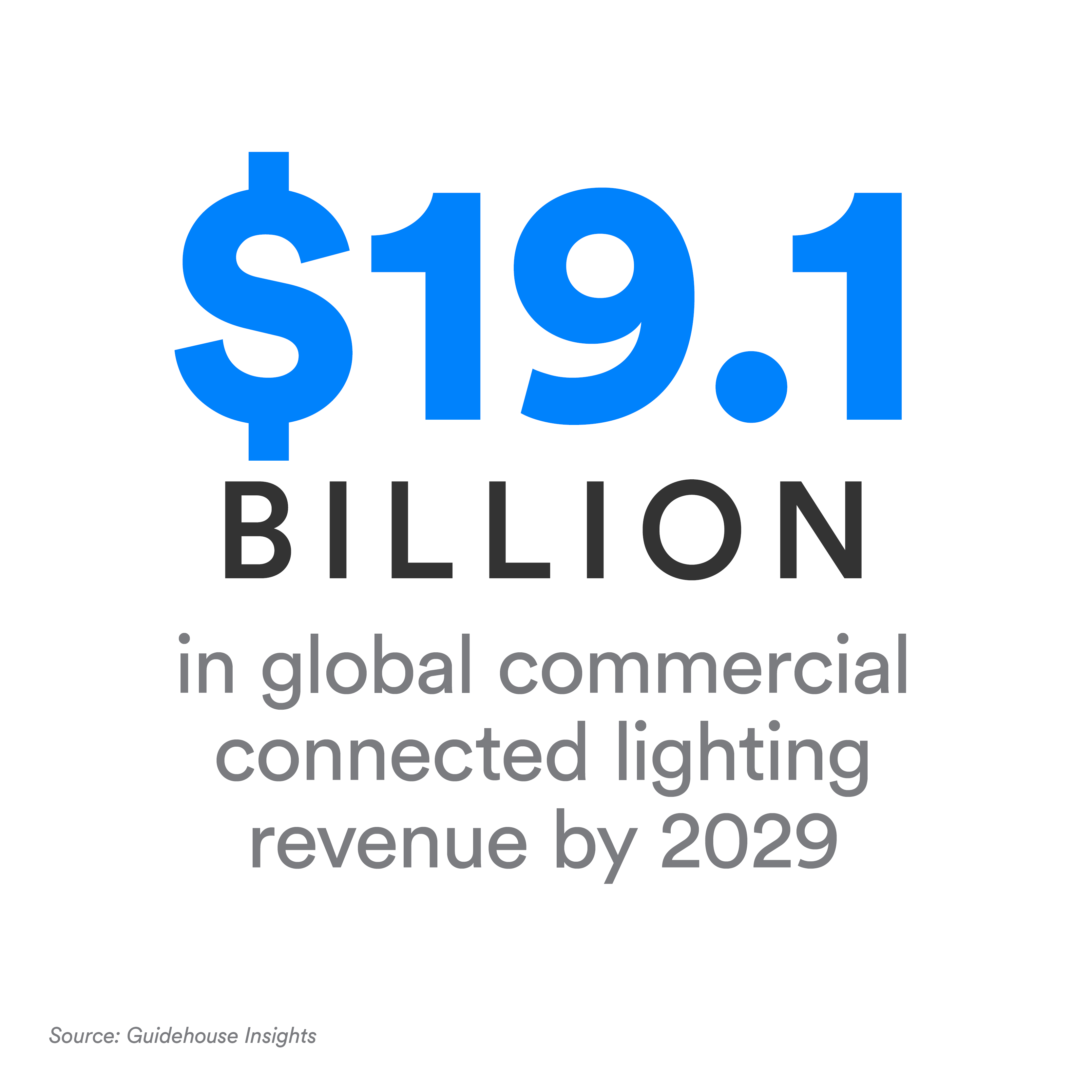Analysts predict Bluetooth commercial connected lighting will gain mainstream traction
|
Commercial connected lighting systems are becoming the central nervous system for buildings, providing building managers with advanced control while helping to drive additional savings and efficiencies. These systems also establish a platform that enables advanced building services, such as indoor navigation and asset tracking.

According to the Bluetooth® Market Update 2021, commercial connected lighting is gaining mainstream traction as the proliferation of LEDs, a desire for greater energy efficiency, faster deployment capabilities, and a higher quality occupant experience are driving the demand for new commercial connected lighting solutions, and many facilities are eager to reap the cost benefits provided by these systems.
Driven in large part by commercial connected lighting, device networks is the fastest-growing Bluetooth® solution area. Analysts who contributed to the Bluetooth Market Update 2021 predict a 4.4x growth in annual shipments of Bluetooth device network devices from 2021 to 2025.
Once seen only within the context of the ideal, the vision of a fully scalable and reliable wireless network capable of supporting a commercial connected lighting platform is now a reality. From the real-world deployment of nearly 4,000 nodes in a 22-story office building in North America to its adoption by a global, long-established lighting control standards organization, Bluetooth Mesh Networking has proven itself as an unparalleled connected lighting solution for demanding commercial environments.
Benefits of Bluetooth® connected lighting go beyond illumination
Building managers are demanding greater insight into buildings. In addition to providing valuable energy efficiencies and a more comfortable and productive experience for occupants, connected lighting systems provide the infrastructure needed for sensors to feed building management solutions and provide data to increase the efficiency and extend the life of core systems like HVAC. Forecasts in the 2021 Bluetooth® market update reflect this trend towards the increased integration of sensors into lighting control networks. Analysts predict that 57 percent of annual connected lighting hardware shipments will be sensors by 2029.
Another reason for optimism in the expanded role of networked lighting control in commercial settings came by way of a recent announcement from the DALI Alliance. In May 2020, the DALI Alliance and the Bluetooth Special Interest Group (SIG) announced a joint effort to specify a standardized gateway for D4i certified intelligent luminaires to be provisioned, managed, and controlled on a Bluetooth® mesh lighting control network. On 15 April 2021, the DALI Alliance released that specification.
The Bluetooth® Mesh Networking to DALI Gateway Specification establishes a bridge between the lighting controls and the sensor-rich luminaires that enables the movement and analysis of building operations data, removing one of the biggest barriers to realizing the true potential of IoT lighting. These sensor-rich lighting systems will allow data to flow freely to other building management systems, enabling more efficient operation of those systems and additional building services that can bring even more value to the building and its occupants.
The Bluetooth Mesh Networking to DALI Gateway Specification represents a key step in enabling lighting control systems to shift from a single-function solution to a platform that feeds building management systems and helps position intelligent lighting infrastructures as central to satisfying the growing demand for increased energy efficiency and improved occupant experience in sustainable, human-centric buildings.